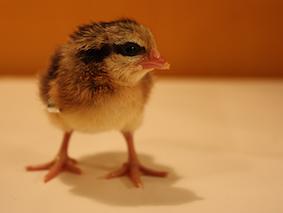Background
Domestication and correlated selection responses

Domestication is the process by wich animals become adapted to humans and the way we keep them. The exact mechanism through which this happens are unclear, but it happens through changes in the genom as well as through environmental influence on the development of an animal. Ancestors of the domesticated species today were probably initially selected, either consciously or unconsciously, on their level of fear of humans. Selection on tameness (or low fear of human) causes correlated selection responses in other traits. Exaples of such traits are white spotting, altered body size and/or proportions, retention of juvenile traits (e.g. floppy ears) and earlier sexual maturity. A correlated selection response can happen through linkage or pleiotropy and it is the process in which several traits are co-selected with a different trait, in this study, the selection on level of fear of humans.
Aims of the study
The purpose of my study was to determine if selection on level of fear of human has had an effect on basal metabolic rate, boldness and traits relating to fecundity. I used the Red Junglefowl as it is the ancestor of the domesticated chicken breeds found today.
Responsible for this page:
Director of undergraduate studies Biology
Last updated:
05/22/14
